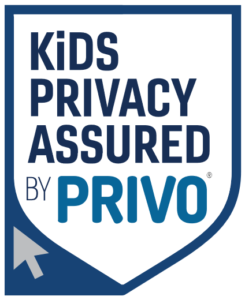Your students, invigorated by your passion for learning a foreign language and developing cultural competency, move to the foreign country where their target language is spoken, live and study in full immersion, achieve fluency in no time, and become self-actualized global citizens full of empathy and social awareness.
That’s the dream, right?
Well—as we educators certainly know—this picture-perfect scenario turns pretty fraught once we think realistically about the obstacles: English as lingua franca, students drawn in too many directions to compete in the ever-growing college pool, the often tyrannical demands of curriculum and standardized testing, the accessibility of international programs to a widening demographic of students with diverse means…the list goes on and on, and language educators know its tune pretty well.
However, take heed, language educators! All is not lost! The advent of telecommunications, the rising popularity of content creation on the internet, and the popularity of user-friendly communication systems, have carved a new path through the obstacle course of language education. These advances have allowed educators to do the impossible: give students authentic interactions with coevals from abroad and create structured, safe, opportunities for real language practice and cultural exchange, all from the comfort of their classrooms!
I love to take students to Italy, but that’s not always possible. And even when it is possible, I can’t force my students to get into conversations with people and practice their language skills on a touristic-style trip. However, through telecollaboration, or virtual exchanges, I can remotely pair my students with another class and have them communicate with each other, learn together, and collaborate on projects. The concept—a techy reboot of the classic pen pal class project of our youths—now comes with all the benefits and advantages of the internet, but also with all the challenges.
Virtual Exchange Options
I began my journey into virtual exchanges by getting to know the various options available to me and my colleagues. There were so many companies that allowed me to shop around for other educators interested in partnering their classes. E-pals was one of those companies that stood out as one of the free sites that has proved simple enough to allow teachers to find each other by country, ages taught, and languages sought. I connected with a few educators in Italy and Argentina. The E-Pals website offers a user-friendly interface so that teachers like me need not fear the technological aspect of the experience. Insofar as security concerns, the site also keeps students largely anonymous and protected by login credentials. And, E-Pals offers different online courses that give students readings, videos, and content to which they can react and which they can discuss with one another.
Pros and Cons of the Pen Pal Solutions in Telecollaboration
E-Pals helped me get started with the virtual exchange process. I very quickly connected with other educators, and then started talking shop. Almost immediately, most of the teachers in Italy wanted to also implement a real, in-person exchange, but obviously that would take more time and commitment. The website did offer some stock courses that my class could take alongside the partner school, but nothing specific to Italian culture or language. Instead, I experimented with having students write to one another on the platform about their communities, schools, lives as students, and to also include pictures and cultural details about their daily lives. As one can guess, this got pretty stale after two or three back-and-forths. As we were nearing the holidays, I suggested that we utilize the calendar to fuel conversations; our students could describe how holiday celebrations take place in their respective communities; in January my students could talk about the Super Bowl; in February the Italian students could tell us about Carnevale, and so on. However, without a real structure or a goal, my endeavors to sustain a pen pal exchange fizzled out.
Upon reflection, I could see that this sort of exchange bears obvious strengths and weaknesses. For one, a platform like the one I was using gives educators very little control over curriculum, and the communication between students either languishes in the simplistic messaging platform, or the punctilious specificity of the pre-made curriculums offered. While I might have enjoyed a break from having to create original assignments for once, the topics did not relate to my classes, and may not really coalesce with other educational programs either. Furthermore, platforms such as these operate more like message boards, so while my students get to practice reading and writing in the foreign language, their other two core skills of listening and speaking remain largely untouched. However, admittedly, these sites aim to recreate the “pen pal” experience, and therefore make no false promises about their offerings to educators.
Pros and Cons of Conferencing Applications in Telecollaboration
On the other end of the telecollaboration spectrum lie the real-time conferencing applications which make real conversation happen instantly and incredibly easily—applications like Google Hangouts, Zoom, Skype, Microsoft Teams, and even social media platforms like Instagram Live Rooms, Facebook Messenger, and WhatsApp video. I was lucky to already have made several partners in Italy, so it was not hard to invite them and their students to give one of these platforms a whirl for a live meeting. However, teachers and students alike by now can probably guess the educational pitfalls and shortcomings I faced with my experience of these systems.
First, language learners may not yet have skills to entertain sustained conversations in real time. Certainly, this was the case for my students when they realized that—surprise!—the kids in Italy could speak English very well while they themselves had a pretty novice-level proficiency of a second language. Then, of course, time zones and scheduling can easily lead to a logistical nightmare—as they did for me! With a rotating schedule, time differences, and special schedules and vacations, I think I was only successful in getting about half a dozen of these virtual meetups off the ground. Finally, these platforms lack security for the students, and don’t easily allow for teachers to supervise their pupils, or give much feedback. I resorted in most of these cases to have one large Zoom meeting between classes, but that made hearing one another pretty challenging, due to ambient noise and seating arrangements, as well as cutting in and out from connectivity issues–all this on top of the fact that the students were trying to understand what was being said in a language other than their own!
While real conversations between students in classrooms across countries is probably the closest surrogate to actual international immersion programs, the structure of the educational program relies heavily on the teachers. Conferencing applications make dialogue between classes easy with breakout room or chat functions which can allow for a variety of smaller conversations and interaction using more of the core skills; however, that’s all it is—a video conferencing software. The actual language education must come from elsewhere. Thus, all these extra tasks now strain the teacher under a yoke that might not stand the test of time, since nearly every aspect of the actual language learning must now depend on the educator to plan, orchestrate, and execute. In my experience, the topics need to be pretty approachable to expect adolescents to actually have a conversation with other adolescents about it. Letting the kids talk about what they know (or what they think they know) seems to be the better avenue, since they no doubt are already struggling with conversing in a language other than their own.
After these experiences, I wondered if there was a middle ground in the widening field of telecollaboration that educators can utilize to bolster their students’ language education? I believe there is, arguably, in systems like asynchronous video exchanges. AFS Intercultural Programs—Erasmus, United Planet, and Level Up Village, to name a few—offer great opportunities for students to participate in meaningful virtual exchanges.
Why Level Up Village?
Level Up Village (LUV) stood out to me as unique for several features that navigate the aforementioned problems. First, LUV offers a secure platform for students, protectively identified only by first name and last initial, to post videos which get approved by the teacher before they’re viewable by the partner school. I didn’t really utilize this last feature because, after watching a handful of videos that my students prepared, I was relatively satisfied with the nature of their friendly but professional tone. However, I can see this being a concern if a teacher was paired up with an educator they didn’t know, and, not every teacher can trust their adolescent pupils to not be rascals!
LUV offers premade courses with prompts that teachers can edit, rewrite, translate, or simply utilize as they are to engage the students in meaningful dialogue about subjects that relate to curriculum. Because the focus of these courses lies in cultural and language exchange, it was incredibly easy for me to adapt them to what we were already doing in class. Whether the topic was climate change, job prospects, or family and community, I was able to supply relevant vocabulary lists and find accompanying work in our textbook because of the universality of the themes as custom-made for the language classroom. The prompts were thoughtful in that they helped me facilitate conversations about how the experience for our students might differ from that of their international peers, and therefore how to approach certain situations in the conversation. And, certainly, my students had a boatload of questions every time new video messages came in, questions that could only be prompted by a glance at how young people live in another country. These conversations were worth their weight in gold, since these are the moments when the magic of teaching cultural competency happens, and matters. My students, I could tell, wanted to make good impressions and have meaningful conversations, so they were receptive to learning more about cultural differences. As their teacher, it was a dream come true for to have them so hooked on acquiring knowledge!
The company also handles the pairing, but will also take on existing partnerships if educators already have a connection abroad. The exchange courses they offer can be tailored in length, content, and frequency so that teachers can make the experience less harrowing for themselves and their schedules. I opted for a four-week program, which gave us a few back-and-forths without really feeling the fatigue that I had experienced the times I had tried to engineer my own exchanges. These features really met our needs and, after having tried a variety of other options, resolved some of the issues I had with virtual exchanges in my classroom.
My experience isn’t the one that matters, however. The students themselves gave the most glowing reviews. While the one-off Zoom meetings were interesting, and the pen pal-style exchanges were fun, I think giving students clear prompts and asking them about themes that were already tied into our Italian class facilitated and grounded the virtual exchange experience for them as a harmonious parallel to an already dynamic language class. I received a lot of feedback from the students; namely, they enjoyed talking to the other kids, getting to know them over a month, and they had a lot of fun creating their videos. I had encouraged them to get creative and challenge themselves to produce interesting and engaging content,—the kind they might also watch for fun—and it worked! It helped them express themselves and their personalities and made the whole experience much more fun for them.
Of course, getting students to travel internationally, immerse themselves in a culture, cultivate relationships, and become better human beings through the power of language, culture, and travel remains the holy grail of language educators. So, we must pull together some semblance of that narrative from the tools we have around us. While the disruption of the recent pandemic caused great challenges and made terrible lacerations in the fabric of education at large, it has, in some fashion, allowed us to assess the strengths and weaknesses of our ways. Truly, while no telecollaboration can ever substitute in-person learning, it can open new avenues for getting our students out into the world. In fact, in ways to which I have already alluded, virtual exchanges may actually be better than traveling with students.
In a virtual exchange, you, the educator, can isolate the learning you want to conduct, set up experiences that can’t often be orchestrated in real life, and be the educator in between. Even at their best, many students are not strong enough linguistically to sustain conversations in their target language without help. Students get discouraged at their own lack of ability to communicate when, after years of build-up, they finally visit the country where their second language is spoken only to be addressed in English because they can’t keep up. These disheartening moments happen too often because we lack the stepping stones to prepare them beyond simulating conversations with them and amongst them. These gaps in what we educators can provide them within the walls of our classrooms is where we can neatly fit in virtual exchanges; a simulacrum of the international immersion, parsed out in short spurts with plenty of help from the sidelines.
About Dan Pieraccini
Dan Pieraccini was born in Northern Italy, but was moved to the United States at the age of 6. Dan’s B.A. in English and M.A. in Italian literature have opened the door to over a decade of teaching high school and college students a second (and in some cases a first) language. It is likely that having traveled through 82 countries, 48 U.S. states, and three disputed territories somehow factored into the decision to make Dan Delbarton School’s first Director of Global Programs. In his spare time, he manages events at his local Elks Lodge, helps feed the hungry at a handful of food pantries, writes and performs rock and roll songs with his band Forget the Whale, plays in a Dungeons and Dragons game, and occasionally goes out to brunch.




